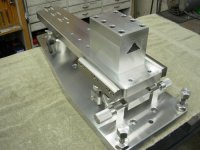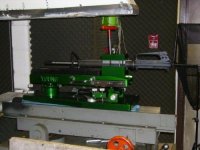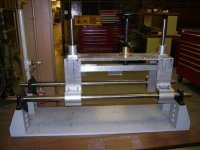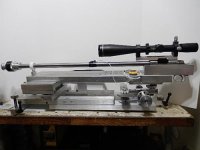Has anyone seen any machine rests or rail gun receivers for precision testing AR-10/15 uppers? I.e., something like a rail base with an AR lower receiver machined to it?
Hyskore has a commercial offering but overall reviews seem to be that it is kludgy and poorly made.
I don't have any direct experience with rail guns, so can anyone help orient me? E.g.,
Hyskore has a commercial offering but overall reviews seem to be that it is kludgy and poorly made.
I don't have any direct experience with rail guns, so can anyone help orient me? E.g.,
- What does a "real" rail-gun base cost?
- Is the base and reset mechanism considered a critical/competitive part of a rail gun, or is that standard and the competitive art is still mostly in the barrelling?
- Are there any sources that would be good for a project like this?






